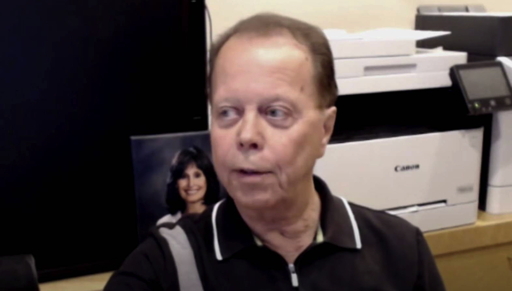They didn’t write the bills.
- 1 Post
- 68 Comments
You think our elected officials are eco-terrorists?

 6·3 days ago
6·3 days agoYep. Scotty Sockpuppet doing his thing. Next step, accusations of “whataboutism.”
Yep. This is substantial and concerning. Reminds me of the US after 9/11. Reality is, as much as Carney is working to diversify trade, we’ve only been deepening out integration with the US on continental security. Not good.
You can just read the bills then.

 12·3 days ago
12·3 days agoWhen an article starts off with a fabrication like this:
Chinese leaders have given a deadline of 2027 to unify China and Taiwan.
You know it’s not a serious piece worth reading.
Either the author is purposely perpetuating a falsehood, or they don’t know what they’re talking about.
Do we get it back if Alberta secedes?

 21·4 days ago
21·4 days agoThe UK caved to the US basically immediately. Hardly a reliable ally in this. They picked the US as besties over us, which should not really surprise. The financial ties of London and New York are stronger and far more alive in 2025 than the old Commonwealth ties of Canada and the UK, not to mention their security and intelligence ties.

 6·5 days ago
6·5 days agoThat was a very interesting article. I didn’t see any link to the report it’s mostly based on. Would love to read it, especially as the authors have very legit credentials. Framing an intentional race-based investment strategy using a “race discount” and a “race bonus” is pretty powerful stuff.

 82·8 days ago
82·8 days agoThe advert is literally just Reagan’s voice from an address he gave against tariffs along with stock video of people and places. That’s it.

 2·8 days ago
2·8 days agoThe three I’ve noticed are Scotty, randomname, and Hotznplotzn. Same for you, or have you noticed others?

 10·9 days ago
10·9 days ago“I found myself crying because of climate change” sounds a touch dramatic, until you tack on “because people I know had to flee their homes and lost everything in a forest fire, and my child with asthma couldn’t play outside most of the summer because of smoke, and we were just told by our insurance company that they won’t insure our home anymore because our area is too high risk now” and so on.

 43·9 days ago
43·9 days agoLol, “spamming around with propaganda” from an account with 141 posts in two months to servers of numerous countries on different continents with posts just driving the same consistent narrative everywhere you can.
I barely have as many comments in six months as you have posts in two, but I’m pushing propaganda? Sure, Scotty.
Don’t engage further. Fine by me. I see you as a sock puppet account and little else.

 42·9 days ago
42·9 days agoRead again. Almost all Chinese purchases of canola came from Canada last year, and Australia was locked out of the market then.
Now, China has purchased 8% of its typical demand from Australia. Even if they still buy a lot from Canada, it’s 540,000 tonnes less than what could have been coming from Canadian producers.
Last year was before the tariffs. September purchases are after the tariffs.
Australia’s market has grown, and they have access to more EVs. Canada’s market has shrunk, and we don’t have access to those EVs, all to please the US.

 32·9 days ago
32·9 days agoThe purchases amount to around 540,000 tons, equivalent to about 8% of China’s total canola imports last year.

 1·9 days ago
1·9 days agoIt’s what makes it such a critical need. Canadian companies, individuals, public services etc will all have a growing demand for inference and it will still largely be coming from centralized servers. If we are not serving that demand domestically and under Canadian regulations, we will be creating huge new vulnerabilities via foreign dependencies. Even despite us not training top models domestically, a lot of demand could be served from domestic use of open models in data centers under Canadian domestic control, including running domestically tuned models and agent swarms that demand tonnes of inference. It’s a serious strategic need that requires national strategic planning, talent development, regulation, and funding.

 42·9 days ago
42·9 days agoHe also writes:
The European Union offers another example. It keeps a 30 per cent tariff on Chinese EVs but exempts those made in EU factories. The result has been billions of dollars in Chinese investment, as automakers and battery firms build new plants and partnerships.
“Tariff barriers will push Chinese automakers to accelerate localized production,” said Fu Bingfeng, secretary-general of the China Association of Automobile Manufacturers. “As of 2025, five Chinese automakers have announced plans to build factories in Europe, with total investment surpassing 20 billion euros ($36.2 billion). Once operational, these plants will help evade tariff costs and improve the supply chain.”
BYD, China’s largest EV maker, is building a factory in Hungary and planning another in Turkey. Major battery makers such as CATL have also invested heavily in Europe. These moves show how well-designed tariffs can attract jobs and technology instead of pushing trade away.
European automakers, rather than resisting, are cooperating with Chinese firms, saying the partnerships strengthen supply chains, improve electrification and support local research.
Canada lacks the EU’s market clout, but it could still serve as a North American toehold for Chinese automakers, especially as our domestic industry faces decline. The 1965 Auto Pact gave Canada guaranteed production shares and jobs in exchange for open access to the U.S. market, anchoring our auto industry for decades. But that arrangement has steadily eroded.
U.S. President Donald Trump’s push to shift all auto manufacturing to the United States is accelerating the trend. Stellantis has announced it will move Jeep production from Brampton, Ont., to Illinois, while Ford and GM are also scaling back in Canada. As the Detroit Three edge toward the exits, Canada needs new partners.
Emulating the EU approach, maintaining tariffs to guard against cheap, subsidized imports while encouraging investment and joint ventures, could help preserve jobs and bring capital to our auto industry. Partnerships of this kind could even breathe life into projects like Project Arrow, a Canadian-designed concept vehicle showcasing the country’s ability to build a zero-emissions car. A real partnership with Chinese automakers could turn that demonstration into production, making Canada more than just a branch plant economy.
The stakes are high. Canada’s auto sector still supports about 125,000 direct jobs, and losing more ground would further weaken our manufacturing base.
But hey, selectively edit however you want…
Australia also just had big canola purchases from China last month. They have both a market for their canola and they have access to nice, affordable Chinese EVs.

 1·10 days ago
1·10 days agoThat was true a couple of years ago, but inference is the primary driver of data center build out now and expected to only increase over coming years. It’s true that Inference is cheap per token, and a lot of inference will move to the edge, but there will be even more demand for centralized compute to take the place of that with more complex and demanding models which can’t run on edge devices.

 11·10 days ago
11·10 days agoInference is what’s primarily driving demand. Training uses massive energy, but is a one-time use per model (for now). Inference is ongoing and scales with demand and model complexity. As demand has kept on climbing, and model complexity has too, inference energy demands are far more than training over time. That’s true even with big effenciency gains in models.

I was sad to see Peter Bros. Construction in BC recently got sold to a Blackrock-owned multinational that was found guilty of using forced labour in Qatar not long ago too.